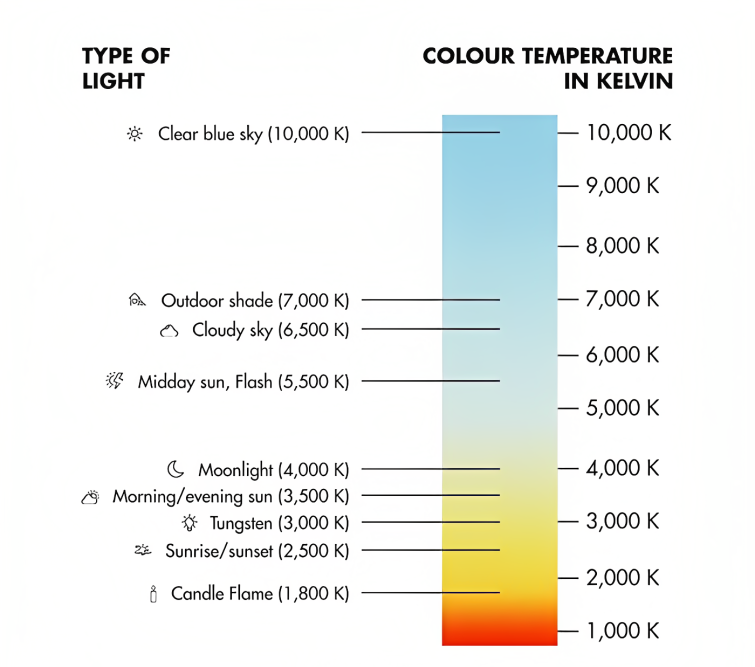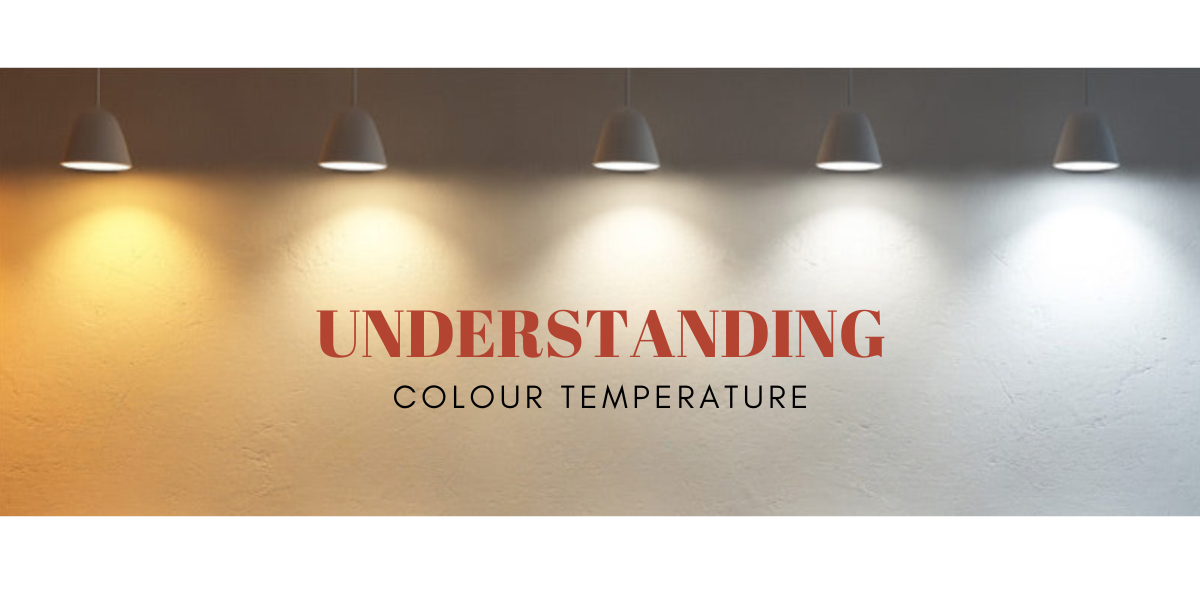WHAT IS COLOUR TEMPERATURE?
Colour temperature is a parameter describing the colour of a visible light source by comparing it to the colour of light emitted by an idealized opaque, non-reflective body. The temperature of the ideal emitter that closely matches the colour of the original visible light source is considered the colour temperature. It is measured in Kelvins (K), the colour temperature scale solely describes the colour of light produced by a light source, which may have a different (often much lower) temperature.
COLOUR TEMPERATURE CHART
The colour temperature scale ranges from warm yellowish-white light to cool bluish-white light.

Warm white: Refers to a range of colour temperatures between 2000K and 3000K. This range of colour temperature is often associated with a warm, yellowish-white light that creates a cosy and inviting atmosphere. Warm white light is commonly used in residential settings such as living rooms, dining areas, and bedrooms, as well as in hospitality and retail environments.
Cool white: Refers to a range of colour temperatures between 4000K and 5000K. This range of colour temperature is often associated with a cool, bluish-white light that is commonly found in workspaces, hospitals, and other areas where people need to stay alert and focused. Cool white light can also be used in outdoor lighting, such as streetlights.
Daylight: Refers to a range of colour temperatures between 5000K and 6500K. This range of colour temperature is often associated with a bright, white light that is similar in appearance to natural daylight. Daylight is commonly used in settings where accurate colour rendering is important, such as in art galleries, museums, retail spaces and office spaces.
HOW TO CHOOSE THE RIGHT COLOUR TEMPERATURE?
1. Consider the primary function of the space: For spaces where relaxation is key, such as bedrooms or living rooms, warmer colour temperatures (2700K-3000K) are generally more suitable. For areas where productivity is important, such as offices or hospitals, cooler colour temperatures (4000K-5000K) are usually better.
2. Consider the colour of your walls and furnishings: The colour temperature of your light source can affect the way colours appear in a room. If your walls or furnishings have warm tones, such as red or orange, a cooler colour temperature may help balance the overall look of the room. Conversely, if your walls or furnishings have cool tones, such as blue or green, a warmer colour temperature may be more appropriate.
3. Existing lighting: If you are adding new lighting to a space that already has existing lighting, consider matching the colour temperature of the new lighting to the existing lighting to maintain consistency and avoid creating a jarring contrast.
4. Personal preference: Ultimately, the colour temperature you choose should be based on personal preference. Some people may prefer warm, cosy feel of warm white light, while others may prefer the clear light of cool white or daylight.
Take Away
Colour temperature is just one factor to consider when selecting lighting for a space. Other factors to consider include brightness, colour rendering, and the type of light bulb being used. By taking these factors in mind, you can choose bulbs that meet your needs and help create the desired atmosphere.
At See Kwong we have varieties of lightbulbs with different colour temperature for your to choose. Just ask for our guidance to find the lightbulbs that suit your home.
Come visit See Kwong Electric at Ipoh or browse www.seekwong.com for the latest deals!

